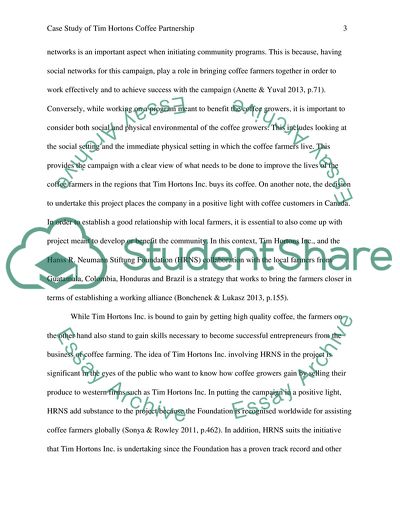Cite this document
(Tim Hortons Coffee Partnership Case Study Example | Topics and Well Written Essays - 3000 words, n.d.)
Tim Hortons Coffee Partnership Case Study Example | Topics and Well Written Essays - 3000 words. https://studentshare.org/journalism-communication/1828056-case-studies-of-tim-hortons-coffee-partnership
Tim Hortons Coffee Partnership Case Study Example | Topics and Well Written Essays - 3000 words. https://studentshare.org/journalism-communication/1828056-case-studies-of-tim-hortons-coffee-partnership
(Tim Hortons Coffee Partnership Case Study Example | Topics and Well Written Essays - 3000 Words)
Tim Hortons Coffee Partnership Case Study Example | Topics and Well Written Essays - 3000 Words. https://studentshare.org/journalism-communication/1828056-case-studies-of-tim-hortons-coffee-partnership.
Tim Hortons Coffee Partnership Case Study Example | Topics and Well Written Essays - 3000 Words. https://studentshare.org/journalism-communication/1828056-case-studies-of-tim-hortons-coffee-partnership.
“Tim Hortons Coffee Partnership Case Study Example | Topics and Well Written Essays - 3000 Words”. https://studentshare.org/journalism-communication/1828056-case-studies-of-tim-hortons-coffee-partnership.


